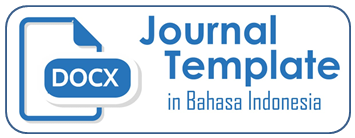Persepsi Perawat Terhadap Kegunaan Dan Kemudahan EMR Untuk Pengisian Pengkajian Pada Pasien Kritis: Pilot Study
DOI:
https://doi.org/10.32524/jksp.v8i3.1702Keywords:
EMR, Nurse Assessment, Perceived Ease of UseAbstract
The implementation of Electronic Medical Records (EMRs) in the initial assessment of critically ill patients is a key innovation to enhance the efficiency and accuracy of nursing documentation This study is a pilot study that aims to determine nurses' perceptions of the usefulness and ease of use of EMR in the initial assessment process for critical patients. A total of 20 nurses from intensive care units in a private hospital in Palembang participated using a total sampling technique. The instrument used was a questionnaire based on the Technology Acceptance Model (TAM). The results showed an average perception score of 4.31 for usefulness and 4.32 for ease of use, both categorized as technology very acceptance. The highest-rated usefulness indicator was “speeds up work” (4.49), while the highest ease-of-use indicator was “easy to control” (4.48). These positive perceptions were influenced by respondent characteristics predominantly female, young (ages 25–30), diploma-level education (D3), and over two years of work experience. The findings indicate that EMRs are well accepted by nurses, especially when supported by user-friendly design and adequate training. This study provides a valuable foundation for the further development and optimal implementation of EMRs in critical care environments.
References
Akwaowo, C.D. et al. (2022) ‘Adoption of electronic medical records in developing countries—A multi-state study of the Nigerian healthcare system’, Frontiers in Digital Health, 4, p. 1017231.
Alhur, A. (2023) ‘An exploration of nurses’ perceptions of the usefulness and easiness of using EMRs’, Journal of public health sciences, 2(01), pp. 20–31.
Almarzouqi, A., Aburayya, A. and Salloum, S.A. (2022) ‘Determinants predicting the electronic medical record adoption in healthcare: A SEM-Artificial Neural Network approach’, PloS one, 17(8), p. e0272735.
Brunker, L.B. et al. (2023) ‘Elderly patients and management in intensive care units (ICU): clinical challenges’, Clinical interventions in aging, pp. 93–112.
Carayon, P. et al. (2011) ‘ICU nurses’ acceptance of electronic health records’, Journal of the American Medical Informatics Association, 18(6), pp. 812–819.
Chen, L. and Aklikokou, A.K. (2020) ‘Determinants of E-government adoption: testing the mediating effects of perceived usefulness and perceived ease of use’, International Journal of Public Administration, 43(10), pp. 850–865.
Chiba, V. (2022) ‘The influence of technology readiness on technology acceptance in the South African mining industry’. University of Pretoria (South Africa).
Derecho, K.C. et al. (2024) ‘Technology adoption of electronic medical records in developing economies: A systematic review on physicians’ perspective’, Digital Health, 10, p. 20552076231224604.
Foba, M.S., Liforter, K.N. and Atanga, M.B.S. (2024) ‘Nursing Documents and Documentation for Patients with Heart Diseases; Could Be Made Easier’, Glob J Emerg Crit Care Med, 1(1), pp. 1–5.
Gesner, E. et al. (2022) ‘Documentation burden in nursing and its role in clinician burnout syndrome’, Applied clinical informatics, 13(05), pp. 983–990.
Gopidasan, B., Amanullah, S. and Adebowale, A. (2022) ‘Electronic medical records–A review of cost-effectiveness, efficiency, quality of care, and usability’, Journal of Psychiatry Spectrum, 1(2), pp. 76–79.
Jedwab, R.M. et al. (2022) ‘Understanding nurses’ perceptions of barriers and enablers to use of a new electronic medical record system in Australia: A qualitative study’, International journal of medical informatics, 158, p. 104654.
Lee, S. (2022) ‘Effect of electronic medical record quality on nurses’ perceived usefulness and ease of use’, CIN: Computers, Informatics, Nursing, 40(8), pp. 562–570.
Na, S. et al. (2022) ‘Acceptance model of artificial intelligence (AI)-based technologies in construction firms: Applying the Technology Acceptance Model (TAM) in combination with the Technology–Organisation–Environment (TOE) framework’, Buildings, 12(2), p. 90.
Natasia, S.R., Wiranti, Y.T. and Parastika, A. (2022) ‘Acceptance analysis of NUADU as e-learning platform using the Technology Acceptance Model (TAM) approach’, Procedia Computer Science, 197, pp. 512–520.
Olakotan, O. et al. (2025) ‘Usability Challenges in Electronic Health Records: Impact on Documentation Burden and Clinical Workflow: A Scoping Review’, Journal of Evaluation in Clinical Practice, 31(4), p. e70189.
Ozili, P.K. (2025) ‘Technology impact model: a transition from the technology acceptance model’, AI & SOCIETY, 40(2), pp. 1–3.
Pasham, S.D. (2023) ‘Network Topology Optimization in Cloud Systems Using Advanced Graph Coloring Algorithms’, The Metascience, 1(1), pp. 122–148.
Paterson, C., Roberts, C. and Bail, K. (2023) ‘“Paper care not patient care”: Nurse and patient experiences of comprehensive risk assessment and care plan documentation in hospital’, Journal of clinical nursing, 32(3–4), pp. 523–538.
Prawira, R. et al. (2023) ‘Description of the usefulness and ease of use wireless stethoscope for auscultation: A pilot study’, JNKI (Jurnal Ners dan Kebidanan Indonesia)(Indonesian Journal of Nursing and Midwifery), 10(4), pp. 321–329.
Tao, X. and Fan, Y. (2023) ‘Research on Electronic Medical Record Information Sharing: A Bibliometric Analysis’, Advances in Engineering Technology Research, 7(1), p. 538.
Downloads
Published
How to Cite
Issue
Section
License
Copyright (c) 2025 Jurnal Kesehatan Saelmakers PERDANA (JKSP)

This work is licensed under a Creative Commons Attribution-ShareAlike 4.0 International License.














